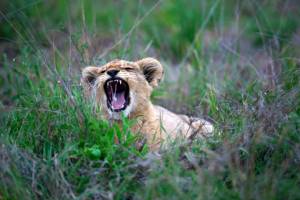
How to Self-Drive Kruger National Park in One Week
Kruger National Park is South Africa’s most iconic game reserve – a vast wilderness where...
 14 July 2025
14 July 2025 
Namibia is a treasure trove of wildlife, and entices nature lovers, driving enthusiasts, 4×4 fanatics and travellers alike to explore its natural wonders.
Its diverse landscapes – towering sand dunes, rugged canyons, lush wetlands, arid desert ecosystems – teem with biodiversity.
These contrasting environments make Namibia home to a remarkably diverse array of animals. Join us as we drive through Namibia’s vast land to meet 10 of its iconic animals.
Location: Kaokoland and Damaraland
Namibia’s desert elephants are an endangered subspecies with high national and international conservation priority accorded to it by IUCN. Only one other group of these rare elephants exists, namely in Mali, North Africa.
Namibia’s total number desert-adapted elephants number only 62 animals. These elephants have developed unique adaptations to survive in the desert, like travelling long distances in search of water and food, as well as surviving with less water. They are ‘ecosystem engineers’ who play an essential part in Namibia’s desert ecosystems.
They dig for water, which helps other animals. They feed on various plants, leaves, grass, sedges, tree bark, flowers, fruit, bulbs, roots and tubers. They feed on plants like the ink bush and castor oil plants that other animals don’t eat. By opening up dense thickets, elephants create paths and shelter for other animals.
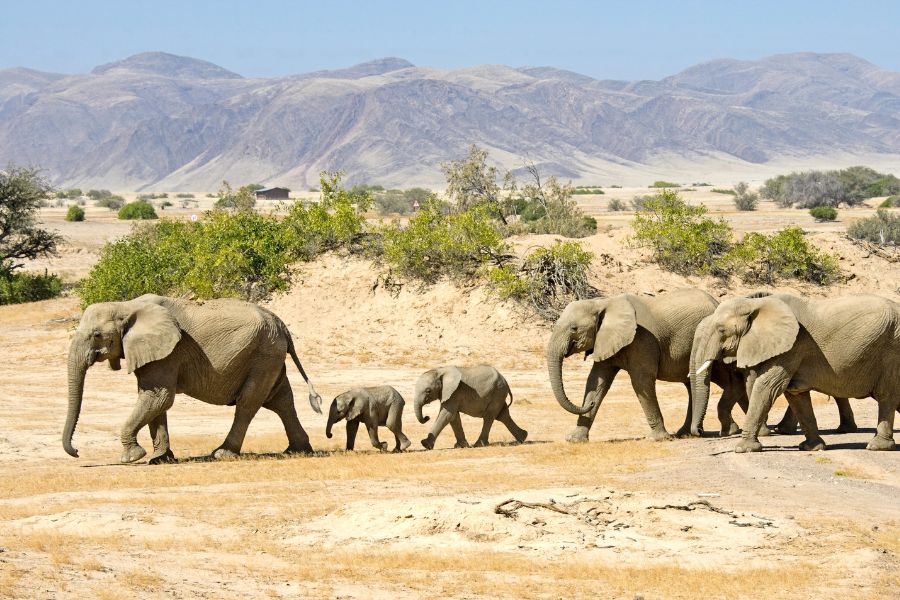
Above: Desert Elephant in Namibia
Trees that they’ve pushed over create sheltered nurseries for plants to germinate without being trampled. Even their deep tracks make ideal spots for seedlings to germinate when it rains!
Interesting Fact: Desert elephants are significantly less wasteful and destructive in their feeding behaviour than ‘ordinary’ elephants.
Location: Damaraland, Etosha National Park
In the ongoing battle against poaching, Namibia is a stronghold of the critically endangered south-western black rhino. The country holds more than a third of Africa’s total black rhino population. Namibia’s Etosha National Park houses the world’s biggest population of black rhinos.
Namibia’s black rhino population has grown steadily over the past ten years due to community engagement, concerted conservation efforts, community-based game guards, and moving rhinos into new habitats with more space to breed.
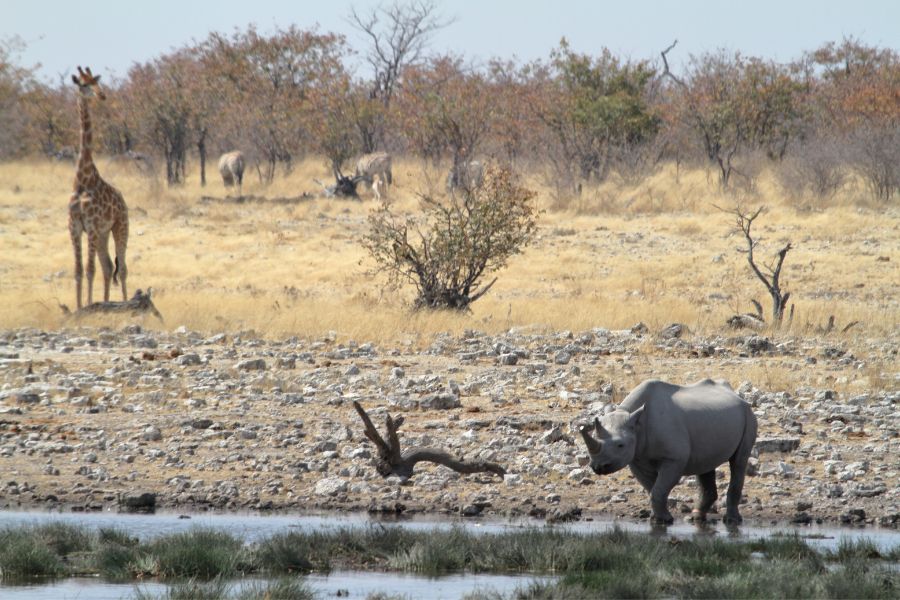
Above: Black Rhino in Etosha National Park in Namibia
Bodies like the WWF, the government of Namibia, the Save the Rhino Trust, the Rooikat Trust, and the Namibia Nature Foundation have all contributed to this success. Rhinos only breed every 2-3 years, so every calf is precious.
Interesting Fact: Black rhinos are browsers, not grazers, so they have a pointed, slightly prehensile upper lip for pulling foliage off shrubs.
Location: Central Namibia, and at the Cheetah Conservation Fund in Otjiwarongo
Famously, cheetahs are the fastest land mammal on the planet, sprinting at speeds of up to 120 kph/75 mph, with remarkable acceleration. Namibia holds the largest population of free-roaming cheetahs in the world, making it a vital hub for cheetah conservation and wildlife enthusiasts.
Namibia’s vast grasslands, savannahs, and semi-desert regions offer an ideal habitat for these superb predators. Cheetahs hunt during the day, and mostly prey on antelopes like springbok and impala.
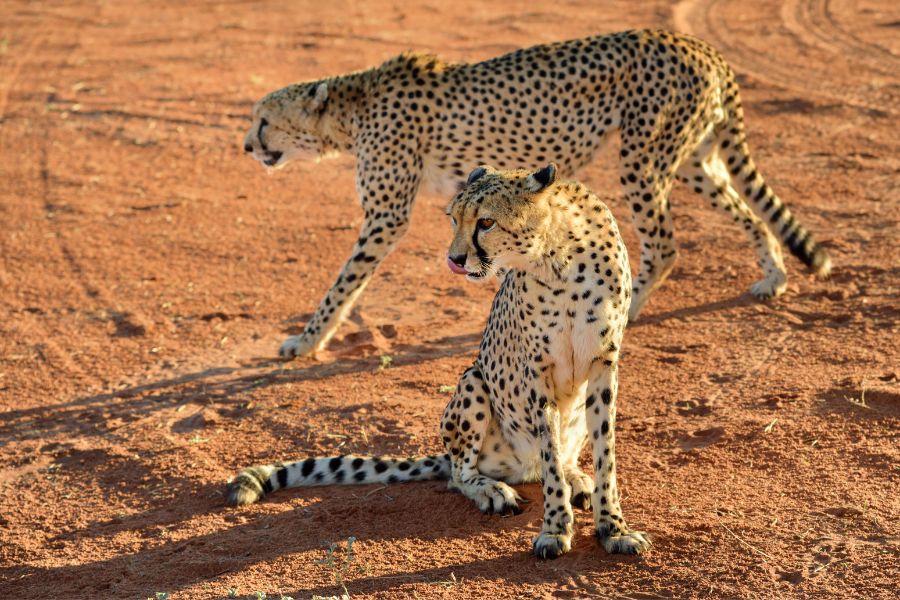
Above: Cheetah in the Kalahari, Namibia
The Namibia-based international Cheetah Conservation Fund plays a vital role in cheetah conservation through research, education, and habitat rehabilitation. They enable visitors to have unique encounters with cheetahs in a safe and controlled environment.
Interesting Fact: Cheetahs’ distinctive black ‘tear tracks’ minimises the glare of the sun so that they see better when hunting.
Location: Namib Desert, Etosha National Park, farmlands
Known for their beautiful colouring, springboks are the most numerous antelope found in Namibia. They typically inhabit dry areas, but occur in a wide range of habitats. Springboks are known for their characteristic stiff-legged bouncing behaviour called ‘pronking’.
These fast antelopes can reach running speeds of 88 kph/55 mph. Males and females both have handsome lyrate horns. They browse and graze, and get most of their moisture requirements from their food, but drink water as well. And yes, they gave SA’s rugby team their name!
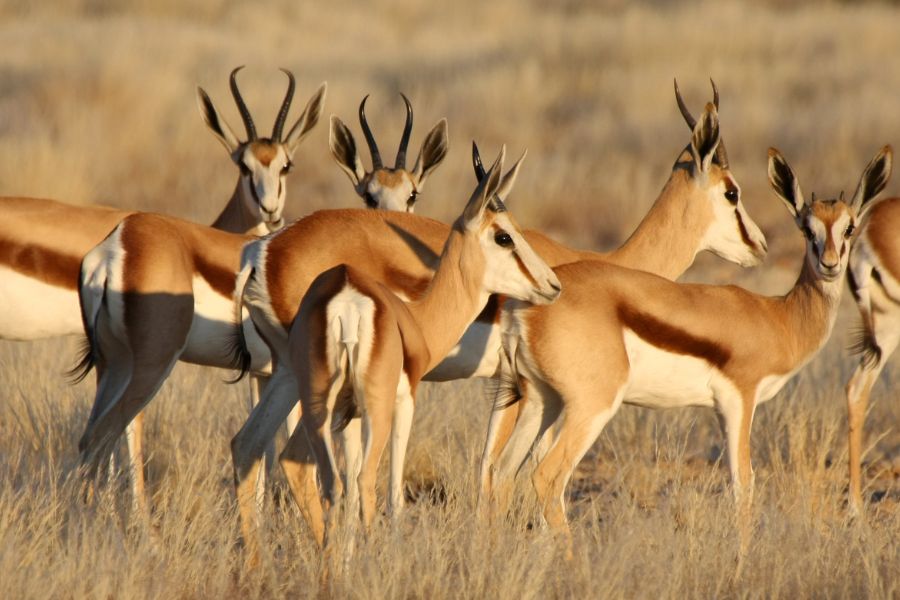
Above: Springbok in Namib Desert, Namibia
Interesting Fact: ‘Marsupialis’ is included in their name because of a distinctive pocket-like flap of skin along their lower backs that can open in a rather startling display of brilliant white fur.
Location: All over Namibia. You’ll often drive past them right next to the road!
These beautiful grey-coloured antelopes with their distinctive facial markings are Namibia’s national animal. They’re more often known by their Afrikaans name ‘gemsbok’. They can weigh up to an impressive 240 kg or 520 pounds.
Gemsbok are well-adapted to the desert. They get most of their moisture requirements from their food, though they do drink water when it’s available. Gemsbok can tolerate extreme heat, and both male and females have deadly long, straight horns that they use very effectively to fight off predators.

Above: Two Oryx’s Head-butting in Namibia
In fact, fights between territorial males are often fatal. Gemsbok eat a wide variety of plant matter: grasses, leaves, flowers, herbs, thorny shrubs, tubers, roots, and water-rich tsamma melons.
Interesting Fact: Gemsbok have a specialised blood circulation system allowing them to survive much higher body temperatures. As they breathe, specialised capillaries in the nose cool the blood going to the brain.
Location: Skeleton Coast, Kunene Region
Namibia is the only country on the planet where you’ll see lions running past rusty shipwrecks on the beach! They’re the only lions known to prey on marine life like seals, cormorants and flamingos, proving they’ve learned that diet adaptability is key to surviving in this harsh terrain.
There are an estimated 100 – 110 desert lions in northwestern Namibia. They tend to be leaner, have longer legs, and thicker coats to withstand the freezing desert nights. They also tend to have smaller prides and bigger home ranges.
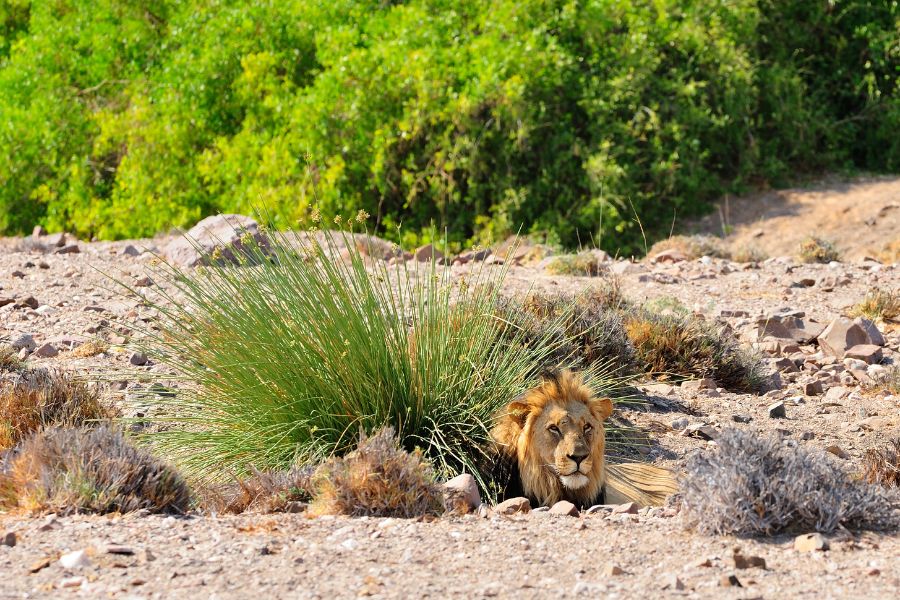
Above: Desert adapted lion in a riverbed
Dr Flip Stander and the Desert Lion Conservation Trust are doing outstanding work to preserve this uniquely adapted subspecies of lions in the face of, particularly, human-lion conflict.
The Lion Ranger programme employs a community-based approach to address this problem.
Interesting Fact: These highly adaptable lions augment their moisture requirements by eating plants like tsamma melons!
Location: Throughout Namibia
Namibia is home to about 11,700 leopards found in a variety of habitats like desert and mountainous areas. Leopard numbers have declined in recent years due to human-leopard conflict and hunting. Leopards are a big drawcard in Namibia’s wildlife tourism industry.
Leopards are generally elusive, nocturnal creatures. The dense bushveld of the Waterberg Plateau and the tree-lined waterholes of Etosha offer the best chances for a rare sighting. They’re known for their distinctive rosette patterning, and beautiful golden coats.
They’re immensely strong, and a male leopard is known to have taken down an eland weighing up to 900 kg/2000 lbs! Males are significantly larger than females.
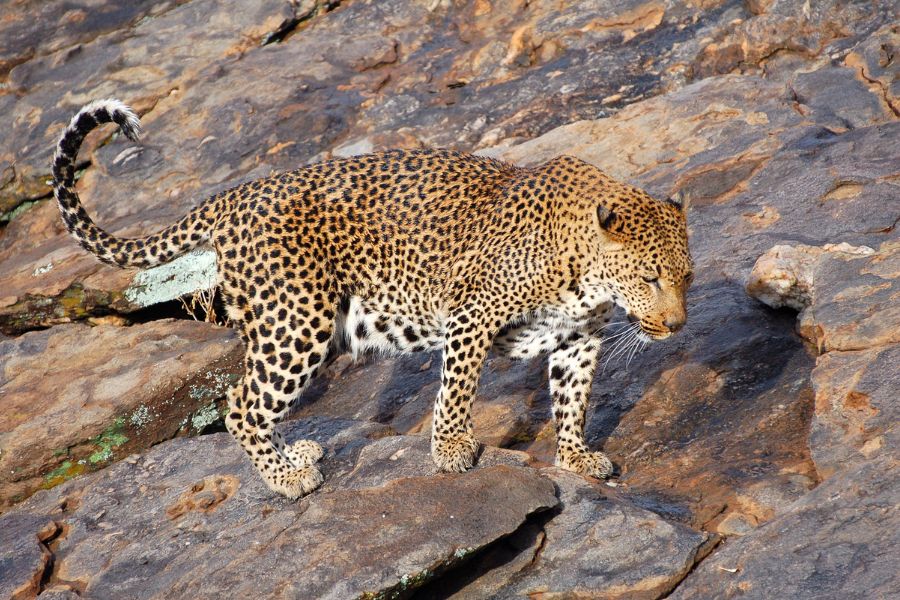
Above: Wild African Leopard in the savannah of Namibia
A female can weigh up to about 130 lbs or 60 kilos. Males can reach a body weight of about 200 pounds or 90 kilograms.
Interesting Fact: Pound-for-pound leopards are the strongest of the big cats, and can hoist animals that weigh more than their own bodyweight into trees.
Location: Cape Cross Seal Reserve, Skeleton Coast, north of Henties Bay
Cape Cross Seal Reserve is home to about 80,000 – 100,000 seals and is a profoundly noisy place! It’s an amazing experience to watch the playful antics of these streamlined creatures in the water. Cape fur seals have thick furry pelts that range in colour from brown to greyish-brown.
They’re actually a species of sea lion or ‘eared seals’ with excellent hearing and eye-sight. The massive males (that can reach up to 360 kg or close on 800 lbs!) have a harem of 5 – 25 females. Females generally weigh no more than about 75 kg or 165 lbs.
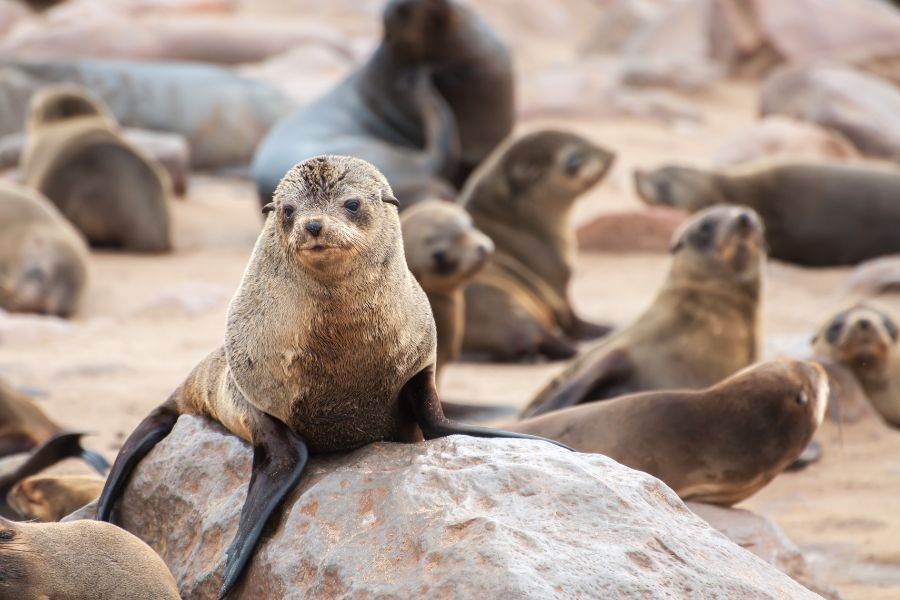
Above: Fur Seal Colony at Cape Cross Seal Reserve, Namibia
The enchanting and very vulnerable jet-black seal pups are born after a gestation period of eight months in November and December.
Interesting Fact: Fur seal milk is extremely rich in fat and nutrients which help their pups grow and develop very rapidly.
Location: All over Namibia, with Etosha and Namib-Naukluft national parks being excellent places to see them.
Named after British explorer/naturalist William Burchell, these zebras are known for their characteristic black and white stripes that gave rise to their collective noun, a ‘dazzle’ of zebras.
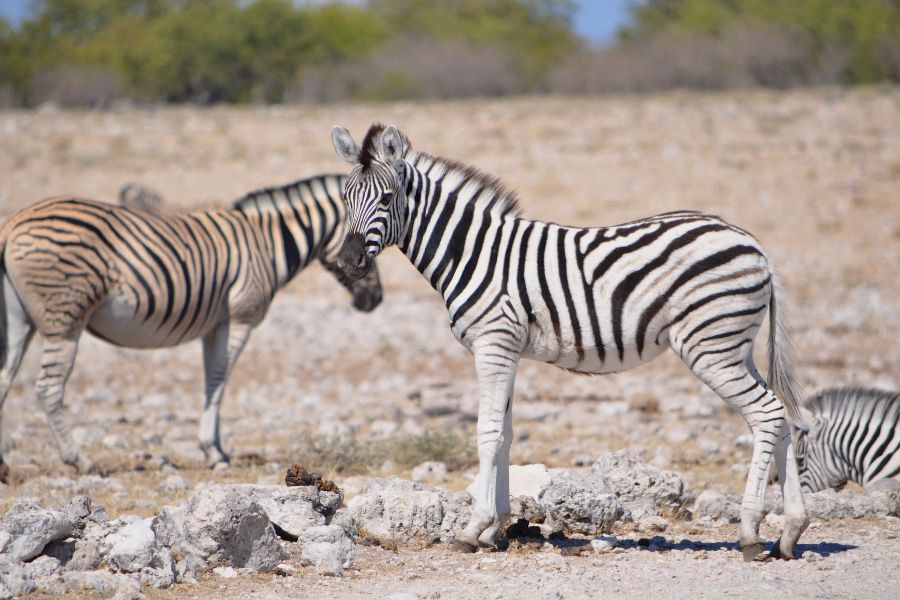
Above: Burchell’s zebra in Namibia, Africa
They add to the country’s rich biodiversity, and Namibia’s national parks and reserves are popular destinations for tourists and wildlife photographers to see them. Zebras live in herds headed by a herd stallion, several females and their offspring.
Location: Walvis Bay and Swakopmund wetlands
The coastal lagoons of Walvis Bay and Swakopmund are a haven for flamingos. They occur in such large flocks that they create beautiful pink areas against the blue water. Both greater and lesser flamingos are found here. Greater flamingos are bottom-feeders, and feed on molluscs, insects, larvae and crustaceans.
Lesser flamingos are herbivorous top-feeders that feed on blue-green algae and plant matter, so there’s no food competition. Their striking pink and red colouration comes from the carotene contained in the shrimps and algae on which they feed.
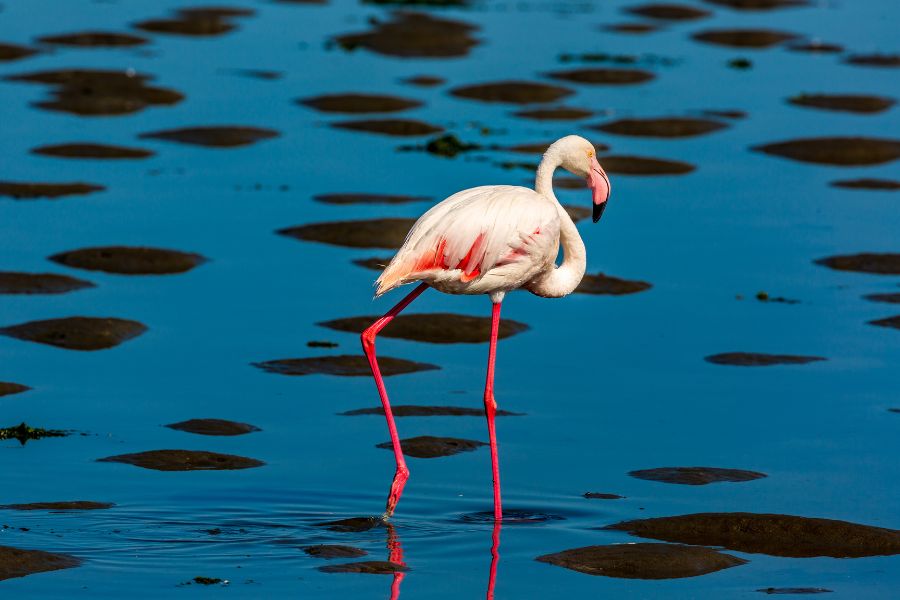
Above: Flamingo in Namibia
They build mound-like nests made of mud and plant material that are designed to keep their eggs safe from flooding.
Interesting Fact: A group of flamingos is called a flamboyance. How extraordinarily apt that is!
Namibia is a mesmerising wildlife destination, with unique landscapes and astonishing wildlife. As you drive through the country, each region tells a story of survival and adaptation in this harsh but extraordinarily beautiful environment.
At Drive South Africa we know that Namibia is an unrivalled driving destination. Whether you’re a die-hard 4×4 enthusiast, looking for a comfortable camper, or just want to drive your family through Namibia’s unique landscapes, we have an affordable vehicle for you to do so in style, comfort and safety!